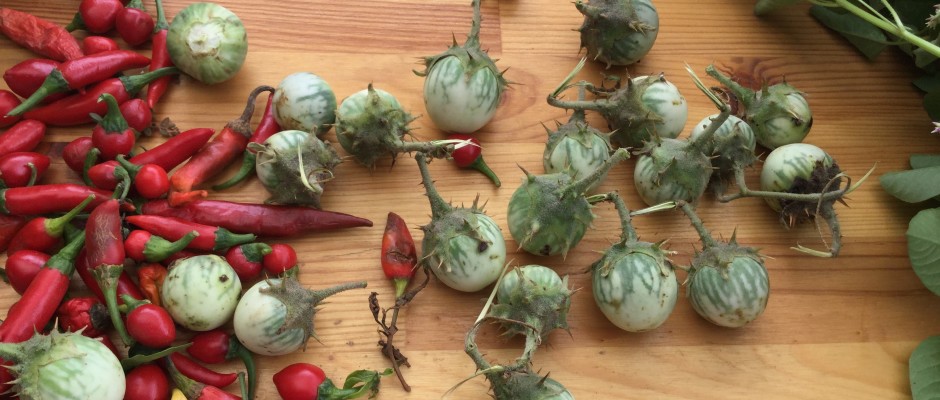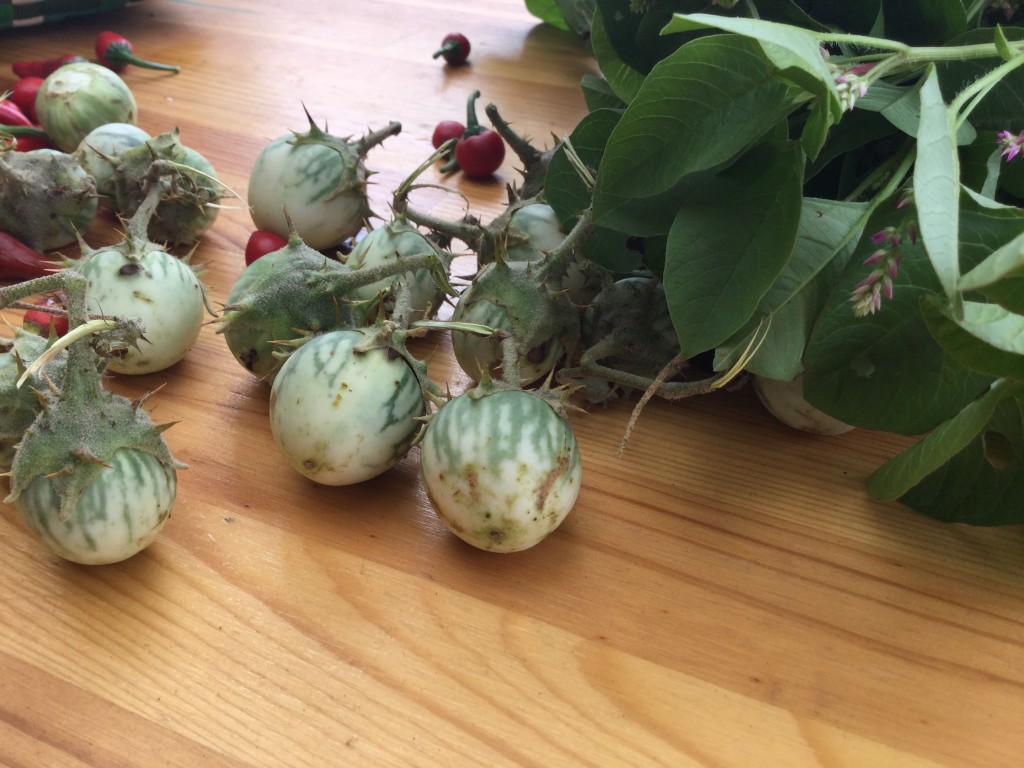Hindu metro plus , Farm foraged food
A few years ago I read about the food philosophy that chef Rene Redzepi had adopted at his restaurant Noma. Not only did he succeed in securing top accolades for his food worldwide but also managed to highlight the beauty of using seasonal produce that grew in and around Copenhagen. A lot of chefs are now being motivated to explore this mindset and are scouring the market place and country side for wild greens and other foraged ingredients. Wild edible ferns are now making their way into many restaurants dishes.
Wild greens love the monsoons and thrive best during this time of the year. A light sprinkling of rain is all it takes to get the land looking all green and vibrant. Small sprigs of purple nightshade or manathakkali as we know it makes it’s appearance and is best eaten during this period. The weather and seasonal produce have a symbiotic relationship. What the soil produces in abundance during a particular time is what is directly linked to seasonal wellness.
This train of thought has led me to many a food discovery and has added to my growing repertoire of seasonal ingredients. As I walked along the sugarcane field near our farm , an interesting creeper caught my eye. The flowers were large and purple in colour similar to that of the brinjal. The fruit too was amazingly similar in appearance but for it’s diminutive size and cover of thorns. The farm hand working there explained that this plant called ‘kadankathiri’ usually crops up in these parts during the rains and was very effective in keeping the cold virus at bay in addition to treating a host of other ailments ranging from dental aches to tummy bugs.
He said most people left it alone because of the effort required in removing the thorns. It’s not only the crown of this small brinjal like fruit that was thorny but the thorns grew along the entire plant. It must be nature’s way of protecting this tiny fruit from being trampled on or being eaten raw by animals. I had to try my hand at plucking it and I was pleased to get about half a kilo without getting pricked by those vicious looking spikes !
Another farmer told me that the seeds must be carefully removed and stored. Although the seeds are inedible , when roasted on a hot pan , the ensuing smoke is apparently effective in relieving painful gums. I couldn’t wait to cook with this new found veg. My sister-in-law , Ramya had eaten it often in the past and suggested that I make a typical South Indian pulikozhambhu with this find.
It’s also referred to as kantakari ,febrifuge plant , or yellow berried night shade. They turn yellow when ripe. The seeds must be scooped out thoroughly before cooking resulting in tiny cup like pieces that can then be braised or fried. The farmer showed me how easy it was to pull the crown away from the rest of the fruit by just coaxing it away with the tip of a spoon or knife.
The dried grass woven basket that I always carry with me was filled to the brim with my day’s pickings. Rain fed greens , kadankathiri and tiny country chillies kept me company on the drive back home while I went through a myriad different possibilities in my head of what best I could cook to honour such beautiful produce !


![IMG_4895[1]](http://pinklemontree.in/wp-content/uploads/2016/08/IMG_48951-e1470110730774-1024x691.jpg)

![IMG_4883[1]](http://pinklemontree.in/wp-content/uploads/2016/08/IMG_48831-1024x768.jpg)
No comments yet.